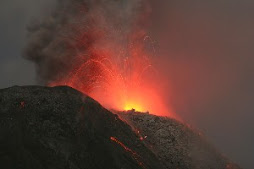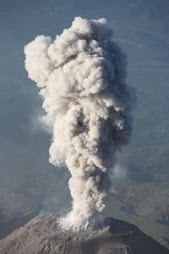Type of Volcano: Composite and Continental
Geologic Location: 14.8N, 91.5W
Country: Guatemala
Nearby cities: El Palmar and Guatemala City
Tectonic Plate(s): Western Caribbean Plate
Type Of Plate Boundary: subduction of the Cocos Plate under the Caribbean Plate
Eruption History:
Most recent eruption(s):2002, 2008
Most famous eruption: 1902, this eruption created a huge crater on Santa Maria
VOLCANO SHAPE:
Height: 12,375 Feet tall
Structure: 1.5km crater on Santa Maria, lava-dome complex, symmetrical, sharp-topped, conical profile
Vents/Craters/Domes: lava-dome complex, 1.5km wide crater, 4 Westward-young vents
NEIGHBORING VOLCANO: Fuego
ERUPTION STYLE:
Explosive/Non-explosive: Explosive
Lava Type: hot lava, rich in silica, highly viscous
Hazards: lahars occurring in rainy season, lava flows do not occur frequently, only stretch a few kilometers from dome, flows are very slow, fast moving pyroclastic flows, may travel several km from dome, large EQ could trigger big landslide
ENVIRONMENTAL DANGERS/BENEFITS:
Soil fertility: the ash can make the soil fertile
Damage to property: 10,000km of volcanis debris in the eruption of 1902, spread all the way to Acapulco, Mexico
Atmospheric affects: The pyroclastis from the eruption were widely scattered over Western Guatemala and Southern Mexico and also caused world-wide atmospheric effects, andesitic-dacitic composition
skip to main |
skip to sidebar



What tectonic plate is Santa Maria on?
What is a city near Santa Maria?
What is a neighboring volcano of Santa Maria?
How wide is the crater on Santa Maria?
What can make the soil fertile that comes from Santa Maria?

No comments:
Post a Comment